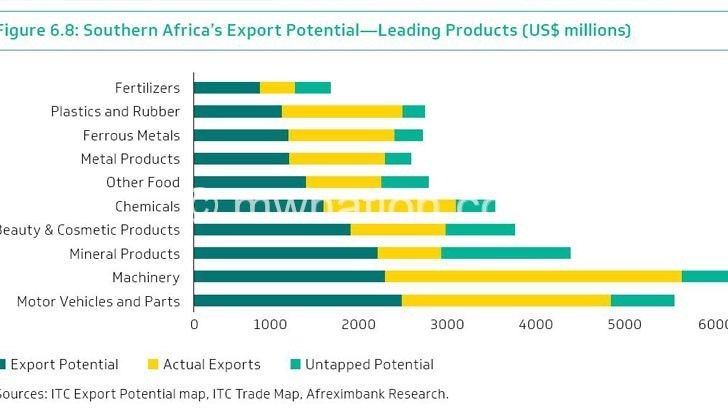Trade balance improves—report
Malawi’s trade balance with the rest of the world has improved to $1.42 billlion (about K1 trillion) from $1.31 billion (about K 970 billion), figures from African Export Import Bank (Afreximbank) show.
In its 2019 African Trade Report, the bank reported that merchandise exports grew by 119 percent to $2.52 billion (about K1.9 trillion) from $1.15 billion (about K851 billion) the previous year while exports grew by a paltry 0.57 percent to $3.63 billion (about K2.7 trillion) from $3.61 billion (about K2.7 trillion).

Trade between Malawi and Africa, on the other hand, saw export growing by 35 percent to $330 million (about K244 billion) while imports grew by 1.1 percent to $720 million (about K548 billion).
Compared to neighbouring countries, at $2.64 billion and $1.71 billion trade balance, Zimbabwe and Mozambique’s trade performance is better than Malawi which is faring well against Zambia ($460 million), Tanzania (-$0.01 billion) and South Africa (-$6.29 billion).
The trade balance refers to the difference in value of imported and exported goods.
While extra-African trade increased by more than five percent in 2018, the value of intra-African trade expanded by over 17 percent, to account for 16 percent of total African trade during the review period.
In the report, Afreximbank president Benedict Oramah, who is on a visit to Malawi, said that in the short-term, Africa is expected to remain on a strong economic growth path, with expanding aggregate output and improving trade performance in 2019.
“To mitigate the potential adverse effects of these risks on African trade and growth, this report argues for a speedy transition towards the digital economy.
“This would both increase productivity and value addition across the different stages of production, and further expand Africa-South and intra-African trade, taking advantage of economies of scale offered by the African Continental Free Trade Area,” he said.
Oramah said this growth was largely driven by industrial products and manufactured goods, which continue to account for the lion’s share of cross-border trade within the region.
“Industrial products and manufactured goods also exhibit the greatest intra-African export potential.
“These results have major implications for economic integration, especially at a time when the implementation of the African Continental Free Trade Area Agreement is set to shift the balance of potential trade relationships within the region,” he said.
Ministry of Industry, Trade and Tourism spokesperson Mayeso Msokera said the ministry will continue to implement policies and strategies to narrow the trade gap, including the review of the Malawi National Export Strategy I and the design of a successor strategy, the National Export Strategy II, which will run from 2019 to 2023.
He said the main focus is to build the export readiness of Malawian exporters and develop regional and global value chains, promoting entrepreneurship with emphasis on micro, small and medium enterprises and women and youth entrepreneurs as well as addressing critical enablers and cross-cutting issues related to exports such as energy, transport, market intelligence and trade facilitation.
Malawi has during the review period experienced improved macroeconomic stability.





